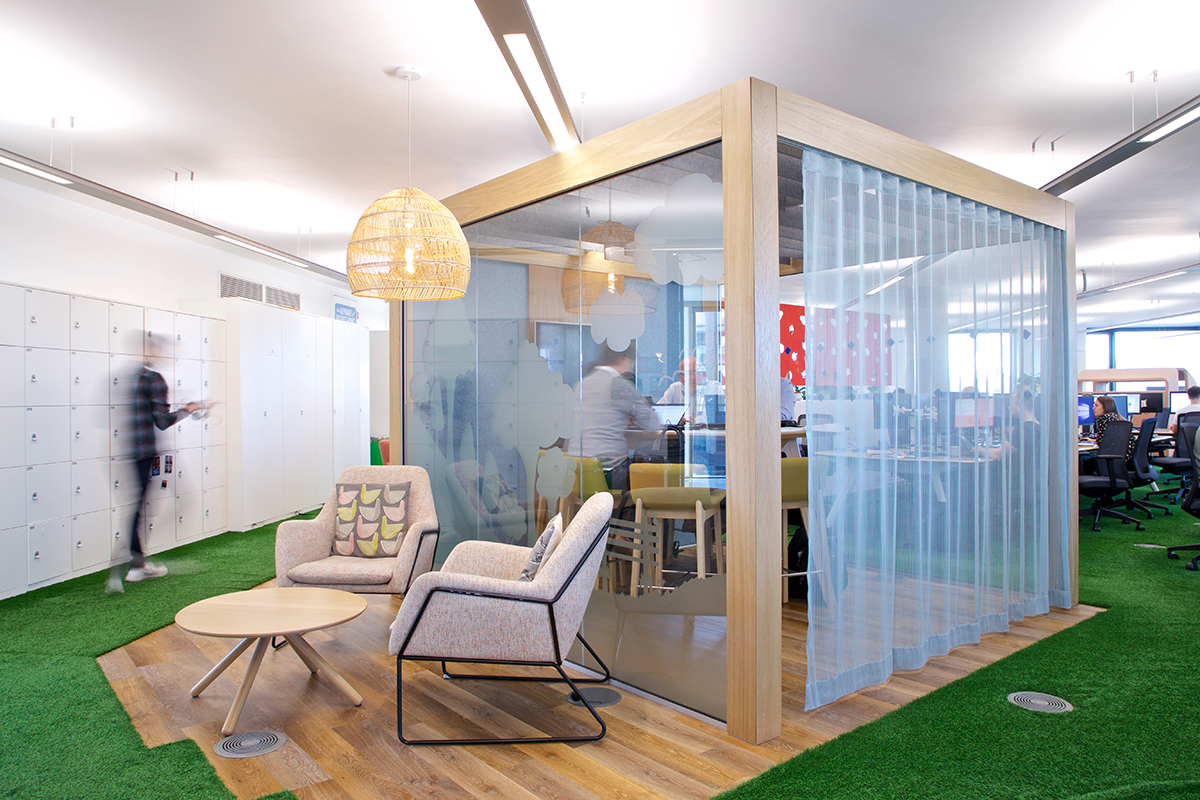With numbers of employees working from home higher than we could have ever predicted – was the pandemic of 2020 set to be the end of the workplace as we know it? Potentially, yes – but only as we know it, the office isn’t dead.
As workplace consultants and space strategy experts, some of the spotlights that have been thrown on the traditional, conventional office in recent months, have been more than welcome. Clocking into a grey room at 9am to be stuck at your grey desk with very little daylight until 5.30pm is a work culture that should never have made it into this decade in the first place – but that doesn’t mean working from home is the way forwards.
The flexibility and the quality of life offered with working from home is something to be noted, but agile working is not something that has been sprung upon us as part of the pandemic – it’s something we interior designers and workplace consultants have been advocating for years. The workplace has, and always will have, a very important role in successful business – finally, the key factors are being recognised and workplaces are being switched on to what their spaces should provide to encourage productivity and motivation.
Whilst technology has proven we don’t always need to be in a boardroom to have a meeting, there are certain aspects of remote-working that cannot be compensated for digitally – it’s the human factor. We know that employees can be trusted and we know they are effective when working remotely but the need for connection and face-to-face interaction has never been more clear.
The role of the workplace has changed and will continue to change as we navigate new ways of working, but the need for meaningful connection will remain the same. The workplace is a space for motivation, inspiration and learning – where we bounce ideas off one another, check-in on timescales and plans whilst setting a mutual and beneficial understanding of a project. These interactions cannot be replaced with an email, with a scheduled Zoom meeting or a phone call – the demand for impromptu conversation is crucial.
So what does this look like? Employees are enjoying their new found flexibility, the workplace has to cater to this and become a place for purposeful and considered working. Many organisations are set to let their employees work remotely for a proportion of the week, with staggered ‘shifts’ in the office, long after the lockdown.
The future of the workplace caters for intentional visits and meetings – from hot-desks to meeting booths and agile seating arrangements. If you would like help to reimagine your workspace then please do get in touch as we would love to help you and explore your opportunities.
Check out some of our flexible workplace design schemes & also we think this article written by one of our partners is well worth a read! “Where lies the ‘future of work’?” by Christopher Allen, MONTROC Consultancy
www.linkedin.com/pulse/so-where-lies-future-work-home-office-hybrid-two-here-allen/






